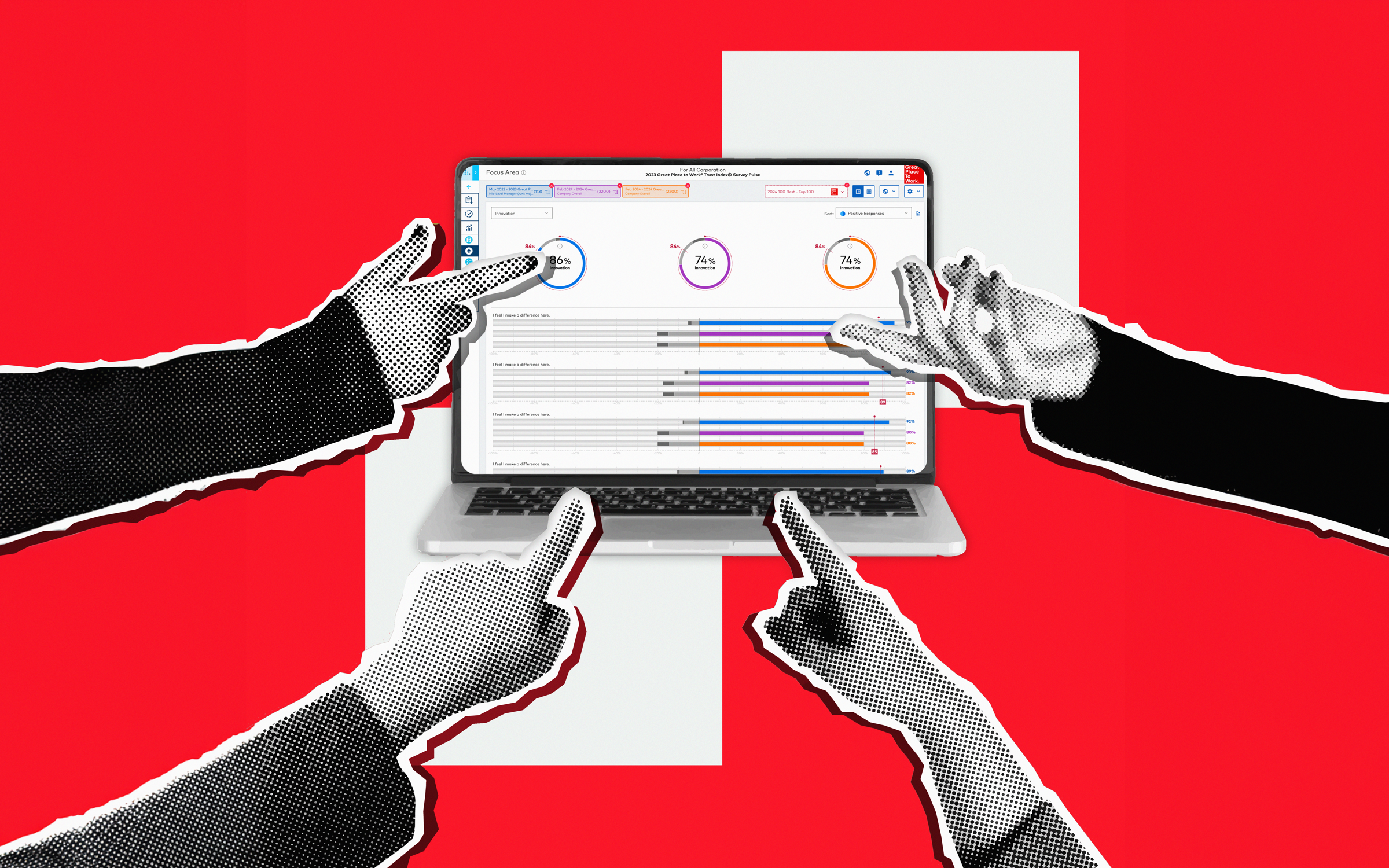
If you’re an HR professional, you know how important it is to survey your employees.
You also know that it's possible to do too much of a good thing. You're justifiably cautious, maybe even fearful, about running too many employee surveys. Maybe you're even considering a new employee survey software to streamline the process and better meet your organization's needs. You've probably had thoughts like these:
- “What if we’re unable to act on the feedback we get?”
- “What if we’re surveying employees too often? Will they stop responding to future surveys?"
- “Our people already have a lot on their plates. I don’t want to overburden them by adding an employee survey to their to-do lists.”
These are all valid concerns--but they shouldn't hold you back from running employee surveys. With a little planning, you can gather timely, valuable insights about your workplace without annoying your colleagues.
When to survey employees: 2 questions to ask
There's no one-size-fits-all frequency for conducting surveys. (Sorry.) However, there are two simple questions you can ask that will help you figure out the timing that works for your organization.
What's my goal for this survey?
Before running an employee survey, make sure you know why you're doing it. This will help you ask questions that give you the most useful feedback.
Here are some possible survey objectives:
- Learn how to better support and survey my employees during a crisis
- Get feedback on how to return to in-office work as smoothly as possible
- Gather baseline data so you can track how your company culture changes over time
Will leadership be able to act on the survey results?
Before launching an employee survey, make sure your leadership teams have the bandwidth to act on the survey results in a timely fashion.
For example, if you work for a tax preparation company, you might not want to launch an employee survey at the height of tax season.
If now isn’t the right time of year to run your survey, that's OK! Figure out when would be a better time--and commit to it. Don’t put it off indefinitely.
Survey employees at least once a year
If you aren't gathering feedback at least once a year, you might fail to notice changes in your employee experience. For example, consider what employees have had to deal with just since March:
- Rising economic uncertainty and the cost-of-living crisis
- Adjusting to hybrid work models or returning to offices after extended remote work
- The impact of election results and policy changes on issues like healthcare, labor rights, and climate initiatives
- Ongoing conversations around diversity, equity, and inclusion, alongside the influence of global social movements
That's a lot to process in a year, let alone a quarter.
90% of our customers survey their employees once a year or more. They know that if you go too long between surveys, it's harder to keep up with the changing needs of your people.
One-on-one check-ins are also valuable, but not everyone is comfortable sharing feedback in person. Employee surveys give people a way to express themselves openly, honestly and confidentially. They also give you the data you need to get buy-in for new initiatives.
Advanced listening calls for pulse surveys
Many organizations with advanced listening strategies survey employees more often than once a year. They may collect feedback and data semiannually, quarterly, monthly or even weekly (like Workday's Feedback Friday survey.)
Once you’re comfortable launching an annual survey, gathering feedback and sharing the results with employees, consider surveying more often. But don't just survey for the sake of surveying--it’s important to analyze the survey results and use them to inform your next survey:
- First, look at the results from your annual survey and identify your main growth opportunities
- After you've worked through the data, think about launching a pulse survey that focuses on one or two specific growth opportunities
For instance, maybe your survey results show that your tenured employees are having a less positive experience than your new hires. You might follow up with a pulse survey geared specifically towards asking your new hires about their training and onboarding experience. You could also conduct listening sessions with longer-tenured employees to better understand why they’re having a less positive experience.
Here at Great Place To Work®, we take our own Trust Index™ survey once a year and run pulse surveys on an as-need basis:
- Our leadership team rolled out a pulse survey in March to better understand how to support our employees during the pandemic
- We hired about 10 new employees towards the end of 2019, so our leadership team decided to run a pulse survey to gauge how their onboarding experience has been
How often is too often? How to avoid survey fatigue
Survey fatigue only occurs when it becomes clear to employees that leadership doesn’t take their feedback into consideration.
Here are some steps you can take to avoid this feeling:
- Express genuine gratitude for your employees’ participation and feedback
- Facilitate listening sessions to gain more context into your survey results
- Summarize leaderships' key takeaways and commitments to action
- Take action as promised
- Clearly communicate results from new initiatives and programs created as a result of the survey.
Whether you survey once, twice or 20+ times a year, if you develop a careful listening strategy built on employee surveys, you'll gain insight that helps you make more data-driven business decisions, support your people and take impactful strategic action.
Ready to start your pulse survey strategy?
Contact us to learn more about our Trust Index employee survey and how we can help you create survey cadence for your organization.
Turn culture insights into business wins
Let the Trust Index™ Survey reveal your workplace’s hidden strengths and areas for growth. Start transforming today.










